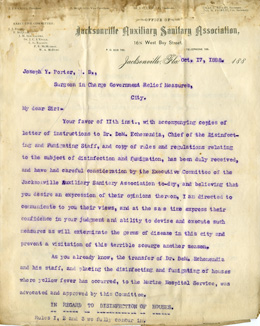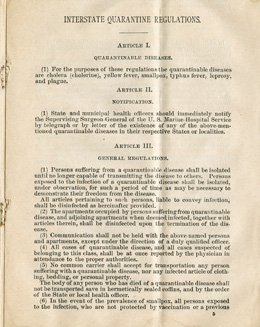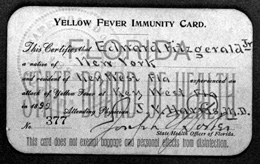Pestilence, Potions, and Persistence Early Florida Medicine
Epidemic Disease and the Establishment of the Board of Health
Yellow Fever, Hookworm, and Clean Cities
A State Health Officer for Florida
By the peak of the yellow fever outbreak of 1888, Dr. Porter was leading all government relief measures in Jacksonville. Porter had been invited by the Duval County Board of Health to coordinate government relief measures being made by the county and the Marine Hospital Service, as well as the donations of money, food, and other goods from private citizens. In 1889, he was appointed State Health Officer by the newly formed State Board of Health.
Efforts to eradicate disease, clean the cities, and allow people to return to homes or resume work impacted every level of government and communities across the south.
Local groups craved assistance from the federal government, such as the Marine Hospital Service, as well as more assistance from the state.
Disinfection and Fumigation in Jacksonville: Burn the Pillows
In this letter from the Jacksonville Auxiliary Sanitary Association, the executive committee reports to Dr. Porter how they have implemented “disinfection and fumigation” procedures.
It shows how Porter was already using the Marine Hospital Service to carry out disinfection and fumigation work, and the Association’s appreciation for that arrangement.
The report also reflects the strain of the policy of disinfection—in large part, destruction of property—on persons in infected homes, and how people were reluctant to agree to it unless assured of compensation from the government.
Even if poorer citizens agreed to the destruction, they may have hidden certain indispensible articles such as bed linens, which in the officials' view would also have been the most likely to be infected.
For those reasons, the committee recommended that destruction of bed linens and similar items be mandatory, therefore ensuring that the burden of property loss fall heaviest upon the poorest citizens, who were victims of the infection precisely because they couldn’t afford to flee. The committee recommended more thorough disinfection, but at the same time suggested that people be compensated for all the property they lost.
Disinfection and Fumigation after the Death of a Person with Yellow Fever
Date: October 17, 1888
Series: S 868 - Yellow fever epidemic incoming correspondence, 1888. Incoming correspondence to Joseph Y. Porter.

Under this head the Committee beg leave to make some suggestions which they hope will impress themselves favorably on you. Rule I.- That instead of leaving it optional with the owner to have “Mattresses, Pillows, Comforts and Blankets soiled by dejections from the sick so as to prevent their further use by anyone else sick in the same house”, destroyed by burning at once, it should be made…
Revising State and Federal Policies
Controlling disease was a vital issue nationally. Federal and state agencies created and revised policies continually in order to protect public health while facilitating commerce.
Interstate Quarantine Regulations
This set of interstate quarantine regulations, which reflects the impact of continuing change in the understanding of yellow fever and epidemic diseases on the formation of health policy, was issued in 1894. It replaced the yellow fever regulations from the previous year, and sought to provide guidance and uniformity of practices for every state and territory in the United States.
The document places yellow fever in the same category as highly contagious diseases including cholera, smallpox, typhus fever, leprosy, and plague. This categorization shows the continuing gravity ascribed to the disease, which had done so much to shape national and state policies. However, it was incorrect given the nature of the disease and the better understanding of it that would emerge within the next decade.
The recommended methods of disinfection and sanitation include the use of pure carbolic acid, sulphur dioxide, and bichloride of mercury. In addition, it stipulates the mass removal of healthy people from infected areas and quarantining of infected areas.
Immunity Certification
The State Board of Health certified citizens as being immune to yellow fever, in addition to other epidemic diseases such as smallpox and cholera.
Dr. Porter strongly believed that an attack of the yellow fever disease made survivors immune, and that people who had lived in areas of outbreak without becoming sick were also immune, although the practice of certification was criticized for being unreliable and subject to corruption and forgery.
The acknowledgement by the state of immunity, also known as “Acclimation Certificates,” became a model for vaccination certification programs later adopted at ports of entry throughout the United States.
Immunity Card
Certification enabled people to travel more freely, a liberty that was particularly important for people engaged in business that required frequent travel out of the state.

 Listen: The Blues Program
Listen: The Blues Program


